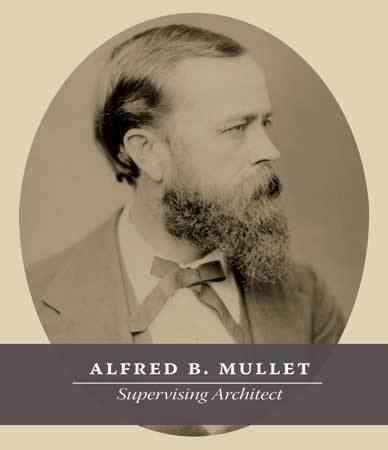Nationality American Occupation Architect | Name Alfred Mullett Role Architect | |
 | ||
Books A.B. Mullett Diaries &c: Annotated Documents, Research & Reminiscence Regarding a Federal Architect Engineer (1834-1890) Structures Executive Office Building, United States Customh, Treasury Building, Pioneer Courthouse, Federal Building Similar People Isaiah Rogers, Robert Mills, Dwight D Eisenhower | ||
Alfred Bult Mullett (April 7, 1834 – October 20, 1890) was an American architect who served from 1866 to 1874 as Supervising Architect, head of the agency of the United States Treasury Department that designed federal government buildings. His work followed trends in Victorian style, evolving from the Greek Revival to Second Empire to Richardsonian Romanesque.
Contents
Life and career
Mullett was born at Taunton in Somerset, England. When he was eight years old, his family emigrated to Glendale, Ohio, where in 1843 his father bought an 80-acre (32 hectares) farm. He matriculated at Farmers' College in College Hill, Cincinnati, studied mathematics and mechanical drawing, but left as a sophomore in 1854. He trained in the Cincinnati office of architect Isaiah Rogers and became a partner, until he left on less than friendly terms in 1860, to establish his own practice. His first known individual design is the Church of the New Jerusalem, a board-and-batten Gothic Revival church built at Glendale in 1861.
After serving with the Union army, Mullett in 1863 relocated to Washington to again work under Rogers, since 1862 the de facto Supervising Architect at the Treasury Department. But he undermined his superior's position until an exasperated Rogers resigned in 1865, the year Mullet married Pacific Pearl Myrick. Although widely dismissed as "an obscure draftsman" from Cincinnati, he used political skill to get appointed Supervising Architect in 1866, and so designed fireproof federal buildings across the nation, particularly custom houses, post offices and courthouses. Responsible for contracting local architects and/or construction companies to deal with subcontractors, source materials and other matters, he gained a reputation as a micromanaging authoritarian with an explosive temper.
Influenced by the 1864–1868 remodeling of the Louvre's Pavillon de Flore by Hector Lefuel and Richard Morris Hunt, Mullett produced six massive fortress-like Second Empire federal buildings in St. Louis, Boston, Philadelphia, Cincinnati, New York and Washington D.C., where the State, War, and Navy Building rose near the White House. These stone and cast iron structures, with mansard roofs and multiple tiers of columns, were expensive. He was dogged by accusations of extravagance and subjected to five separate investigations into his ties to the corrupt "Granite Ring". Mullett reluctantly resigned in 1874 while under attack from reforming Treasury Secretary Benjamin Bristow and others.
He was investigated for negligence when three men were killed on May 1, 1877 by a floor failure at the City Hall Post Office, New York City. In 1882, he set up a practice in New York with Hugo Kafka and William G. Steinmetz, later establishing Alfred B. Mullett & Sons to practice with his two elder sons. But the government never paid him for major commissions, and he remained a popular political target. The New York Sun called him "the most arrogant, pretentious, and preposterous little humbug in the United States." In 1890, in financial trouble and ill health, Mullett killed himself in Washington. Over his career he produced some 40 government buildings, and two of the six huge Second Empire piles remain standing in St. Louis and Washington. During the Modernist period, critics accused him of using overblown ornament to hide weak form. The New York City Hall Post Office was dubbed "Mullett's monstrosity." Following another shift in popular taste, however, he is recognized for his contribution to monumental Victorian architecture.
